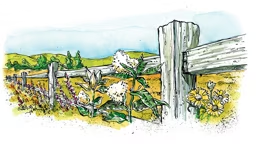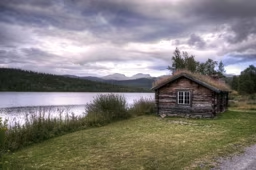Fireplaces don’t require a lot of TLC. But by following just a few guidelines, your fireplace will burn more safely, efficiently and beautifully.
Wood-burning Fireplace
1. Burn only cured wood. Freshly cut, green wood contains a lot of moisture so it doesn’t burn well. A fire that burns poorly can cause creosote buildup in the chimney, and this can cause a dangerous chimney fire. Burn well-seasoned wood – meaning it’s been split and stacked and has been drying out for well over six months. Seasoned wood creates less creosote because it burns hotter and faster.
2. Build small, hot fires. A large, smoldering fire will cool in the chimney, again causing creosote to accumulate. But a small, hot fire will burn more cleanly.
3. Clean your firebox regularly. Clean your firebox out periodically, scooping out the cold ashes into a metal container for safe disposal. A clean firebox will allow good airflow beneath your grate, and this will make for a hotter, prettier fire.
4. Get swept annually. Every year, hire a chimney sweep to clean and inspect your fireplace and chimney.
What about chimney-cleaning logs that many of us have seen advertised? Fire safety experts say they can’t hurt, but they are not a replacement for annual inspections and cleaning by professional sweeps.
Gas Fireplace
1. Get an annual check-up. Each year ask your natural gas or propane company to send someone out to check your insert. He/she can check for gas leaks and adjust the air/gas ratio to prevent sooting in your firebox and outside your home.
2. Clean the glass. Following directions in your owner’s manual, clean the soot from your glass doors when it begins to build up.
3. Freshen the embers. Your embers can be changed every year or two when they’re fouled by soot. This can make your fire more beautiful and more realistic looking. Even if you own an older insert, add fresh embers to dress it up; sprinkle them liberally on top of your logs.
Wood-burning Fireplace
1. Burn only cured wood. Freshly cut, green wood contains a lot of moisture so it doesn’t burn well. A fire that burns poorly can cause creosote buildup in the chimney, and this can cause a dangerous chimney fire. Burn well-seasoned wood – meaning it’s been split and stacked and has been drying out for well over six months. Seasoned wood creates less creosote because it burns hotter and faster.
2. Build small, hot fires. A large, smoldering fire will cool in the chimney, again causing creosote to accumulate. But a small, hot fire will burn more cleanly.
3. Clean your firebox regularly. Clean your firebox out periodically, scooping out the cold ashes into a metal container for safe disposal. A clean firebox will allow good airflow beneath your grate, and this will make for a hotter, prettier fire.
4. Get swept annually. Every year, hire a chimney sweep to clean and inspect your fireplace and chimney.
What about chimney-cleaning logs that many of us have seen advertised? Fire safety experts say they can’t hurt, but they are not a replacement for annual inspections and cleaning by professional sweeps.
Gas Fireplace
1. Get an annual check-up. Each year ask your natural gas or propane company to send someone out to check your insert. He/she can check for gas leaks and adjust the air/gas ratio to prevent sooting in your firebox and outside your home.
2. Clean the glass. Following directions in your owner’s manual, clean the soot from your glass doors when it begins to build up.
3. Freshen the embers. Your embers can be changed every year or two when they’re fouled by soot. This can make your fire more beautiful and more realistic looking. Even if you own an older insert, add fresh embers to dress it up; sprinkle them liberally on top of your logs.
Bats in the chimney?
If your gas fireplace has a chimney it should be inspected annually, but should not need cleaning unless bats or birds are taking up residence. This usually happens only if you don’t have a properly installed chimney cap. A professional chimney sweep can take care of this for you. (The best time for bat-proofing is between November and March, prior to the nesting season.)
If your gas fireplace has a chimney it should be inspected annually, but should not need cleaning unless bats or birds are taking up residence. This usually happens only if you don’t have a properly installed chimney cap. A professional chimney sweep can take care of this for you. (The best time for bat-proofing is between November and March, prior to the nesting season.)








